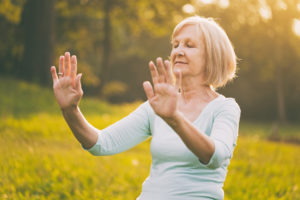 In Vermont, it’s more than the autumn leaves that fall.
In Vermont, it’s more than the autumn leaves that fall.
Every year, more than 125 Vermonters die, and 20,000 visit the emergency department, because of a fall. 90% of these individuals are 65 years and older.
According to Tanya Wells, Injury Prevention Chief for the Vermont Department of Health, several factors contribute to the prevalence of falls in the state. “We have a high rate of substance abuse in older Vermont adults. We also have high rates of Alzheimer’s and dementia and an old housing stock.”
Kathy Paquet, Nutrition & Wellness Director at the Central Vermont Council on Aging (CVCOA), says that once a person has fallen they are likely to fall again. “It’s a public health issue,” she says. Like Tanya, Kathy believes that the reasons for the high rate of falls are varied. “Some of it may be adverse side effects from taking multiple medications. It could also be that some people are weaker as they age. We’ve also found that there’s a high incidence of falls in the spring. People are excited about the change of weather and may forget to pay attention.”
The Good News? Most falls are preventable.
September 23 is Falls Prevention Awareness Day. There are many resources online and in the community to help reduce the risk of a fall.
Falls Free Vermont is a coalition of organizations with a mission to reduce preventable falls and fall-related injury and death in older adults. Tanya Wells and Kathy Paquet were founding members of the coalition along with Vermont’s Area Agencies on Aging, Vermont Department of Health and Department of Aging and Independent Living, Central Vermont Home Health & Hospice, and University of Vermont Medical Center, among others. The coalition’s efforts are organized into three areas: providing statewide resources, raising awareness, and increasing training and education.
——
Easy Strength-Building Exercises You Can Do at Home
Carrie Mancini, a practicing Physical Therapist, Wound Care Clinician, and our Rehab Coordinator, offers helpful information to help you maintain and improve your strength as the weather gets colder.
——
Tanya recommends the Center for Disease Control’s Check for Safety: A Home Fall Prevention Checklist for Older Adults, which goes room by room through the home and points out often overlooked fall hazards. For example, are there throw rugs on the floor, are the staircases well lit, and how slippery is the tub or shower floor.
The checklist offers additional steps to take to reduce the fall risk. These include getting vision checked and starting an exercise routine to improve balance and strengthen the legs.
Under the umbrella of the Falls Free coalition, there are local efforts and initiatives happening year-round. One such example is Stay Steady, which has been offering free assessments and education across the state on leg strength, balance, and walking.
 In addition, CVCOA offers classes like Tai Chi Level 1 to help central Vermonters improve strength and balance. “Vermont’s Fall Prevention Tai Chi program is an evidence-based approach that is recommended for alleviating symptoms of arthritis and for fall prevention,” says Kathy. “Regular practice of Tai Chi improves balance by strengthening muscles and coordination, and it also helps strengthen the mind, improve calmness, and confidence.”
In addition, CVCOA offers classes like Tai Chi Level 1 to help central Vermonters improve strength and balance. “Vermont’s Fall Prevention Tai Chi program is an evidence-based approach that is recommended for alleviating symptoms of arthritis and for fall prevention,” says Kathy. “Regular practice of Tai Chi improves balance by strengthening muscles and coordination, and it also helps strengthen the mind, improve calmness, and confidence.”
Tips for Walking Safely on the Ice & Snow
A simple trip or fall walking from the car to your front door could change your life. You could break a bone or worse. Here are four tips to take through the winter to reduce your risk of a slip or fall.
Additional Falls-Prevention Information
Visit the Central Vermont Council on Aging.